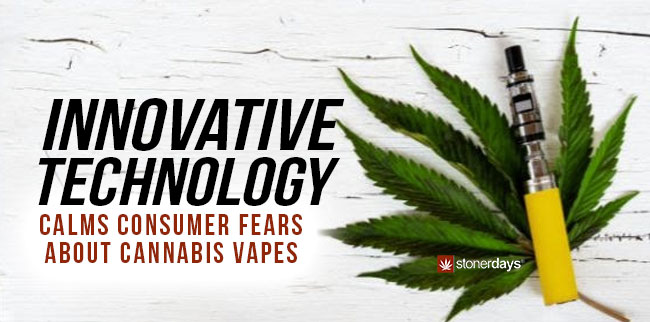Transparency in vape technology repairs some of the damage done to the industry following the 2019 vape scare.
In September 2019, the nascent cannabis industry got clobbered by a sudden spike of lung injuries allegedly associated with vaping. By February 18, 2019, the CDC reported that a total of 2,807 e-cigarette smokers were hospitalized with a lung injury called e-cigarette or Vaping Product Use-associated Lung Injury (EVALI). Of those confirmed cases, Sixty-eight deaths had been reported in 29 states and the District of Columbia.
The CDC, FDA, along with a phalanx of state and local health agencies, immediately began compiling data on those who were being diagnosed with EVALI. It soon became apparent that the only commonality among the stricken EVALI patients was that they were all vape users. Legitimate e-cigarette retailers, manufacturers, and distributors were put under the microscope in an effort to identify the source of the tainted product. The cannabis industry immediately went into action, proactively seeking to identify the tainted products’ source and to assure that nothing had slipped into the highly regulated and approved inventory. After all, the industry had a lot at stake to make sure that all the mandates pertaining to their inventory were strictly enforced.
As it turned out, investigators found that the cannabis industry was not the source of the tainted vape product. The illicit goods were acquired from the black market by employing informal sources such as family/friends, dealers, online, or other sources. None of the illnesses were the result of products purchased from licensed and legitimate cannabis dealers. But, much of the damage had already been done and cannabis manufacturers, retailers, and distributors are still recovering from the negative publicity and false narrative emanating from the publicity.
However, the experience caused the industry to realize that, in order to prevent such future debacles from occurring, procedures must be put into place that would preclude the possibility of being tarnished by the same black market brush. In order to protect the vulnerable MJ market from future P.R. nightmares, the industry turned to IT to find ways to protect the nascent industry.
In order to regain consumer trust, the cannabis industry needed to give consumers and regulators the ability to check on any product quality at any time as it traveled throughout the supply chain. Tech companies went to work to create a completely transparent view of each product that’s instantly accessible to consumers at any point in the supply chain.
For example, Ispire, a leader in cannabis vape technology, spent years in research and development, and their vape technology follows the highest safety, quality standards, and industry compliance rules. Many other vape brands have followed suit, ensuring a safe experience for cannabis vape consumers.
Tech-based solutions were made available to cannabis companies that tracked data such as:
- The product’s Certificate of Analysis, including complete testing results, to help consumers monitor dosing, usage, etc.,
- Encrypting cartridges to combat counterfeit vape products, and exceeding state testing requirements to ensure product safety.
- Establishing resting procedures that exceed state requirements.
- Making the technology easily available on any android device. (Apple has excluded all cannabis-centric apps from its iPhones).
When it comes to restoring consumer confidence in the cannabis vape industry, transparency is the winning ingredient.


